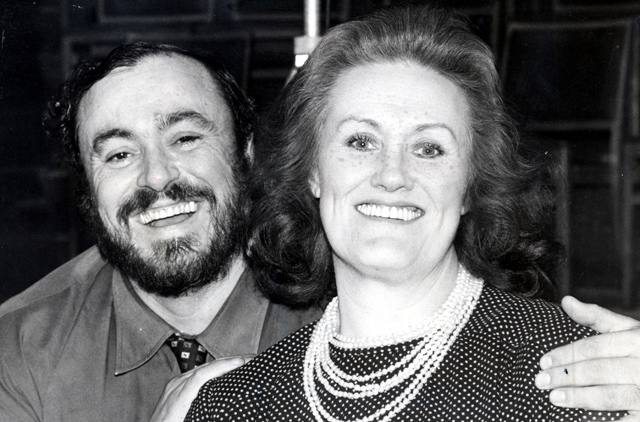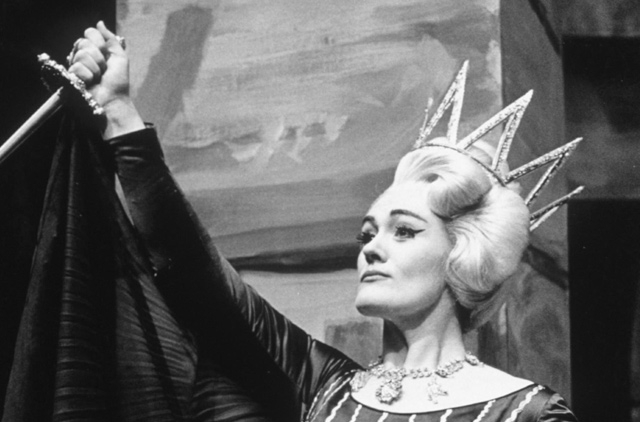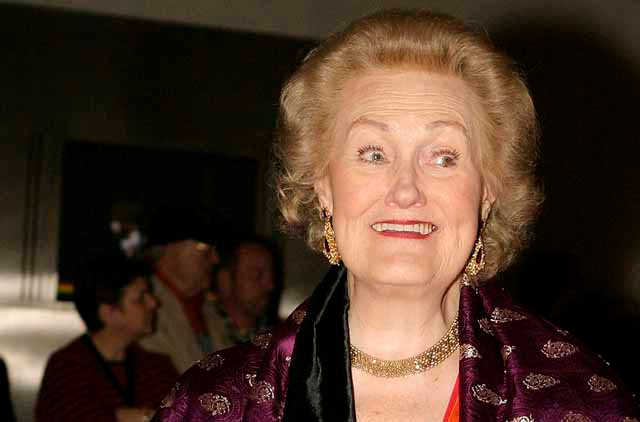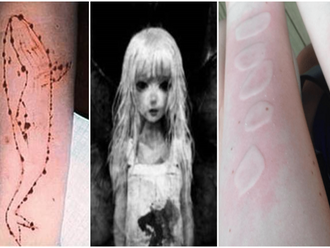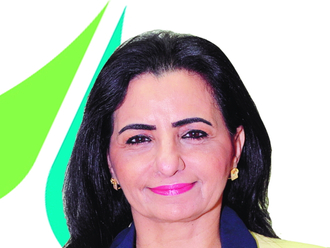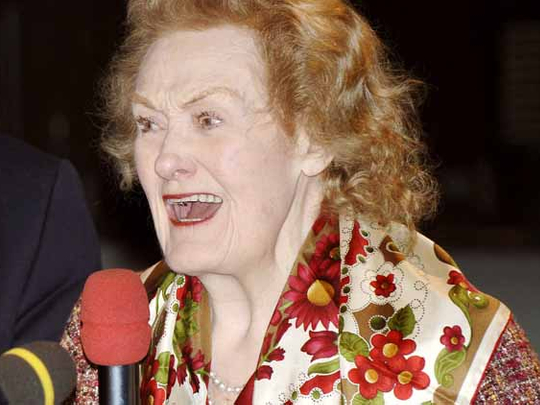
Geneva: Joan Sutherland's radiant soprano stretched effortlessly over more than three octaves, with a purity of tone that made her one of the most celebrated opera singers of all time.
Acclaimed "La Stupenda" (the Stupendous one) during a career spanning more than four decades, Sutherland was known in the opera world as an "anti-diva" diva whose warm vibrant sound and subtle coloring helped revitalise the school of early 19th-century Italian opera known as bel canto.
She died Sunday at her home near Geneva, after what her family described as a long illness. She was 83.
Superlatives were attached to Sutherland's name from the moment she made her Italian debut in the title role of Handel's "Alcina" in Venice in 1960.
Luciano Pavarotti proclaimed hers "the voice of the century," while to English-speaking opera goers she was "The Incomparable" for her mastery of coloratura - the ability to effortlessly sing difficult trills and rapid passages in high registers.
The late tenor Pavarotti, who joined with mezzo-soprano Marilyn Horne in Sutherland's farewell gala recital at London's Covent Garden on December 31, 1990, called her "the greatest coloratura soprano of all time."
"Her voice came straight into my ear; it was as if she was singing in my ear," Horne told The Associated Press.
As her good friend Sutherland lay dying in Switzerland, Horne said she "couldn't sleep all night. It was almost as if I was keeping vigil." She said she waited until 4am, when it was "a decent hour" in Europe, and called Sutherland's husband, conductor Richard Bonynge.
"Ricky told me, 'She's gone,'" said Horne, adding that Sutherland had suffered from a heart ailment for several years.
Spanish tenor Placido Domingo, who first worked with Sutherland when he made his US debut in 1961, rated his appearances opposite her in productions of the bel canto opera "Lucia di Lammermoor" at the Met and in Hamburg as "among the greatest stage experiences of my life."
"That magnificent voice, with its enormous range and power, and the interpretations she brought not only to standard repertoire operas but also to bel canto works that had nearly been forgotten, ensure a permanent place for her in the history of our art," Domingo said.
With a resplendent soprano capable of effortless flights from low G to high C and beyond, the Australian-born Sutherland could have evolved in many operatic directions. While under contract at Covent Garden, she sang Mozart, Poulenc, Verdi — even Wagner.
However, her 1954 marriage to Bonynge, a fellow Australian who became Sutherland's coach, set her on her future path, taking on the major roles of early 19th-century Italian bel canto opera.
The bel canto repertory — literally "beautiful song" in Italian — had languished for decades outside Italy, until the legendary Maria Callas took on the roles in the early 1950s, demonstrating that operas like Donizetti's "Lucia di Lammermoor" and Bellini's "Norma" were not just showcases for coloratura agility but gripping dramatic works.
The two powerhouse sopranos were frequently compared to one another, sparking rumors of a rivalry.
Italian director Franco Zeffirelli, who directed Sutherland in the 1959 Covent Garden performance of "Lucia di Lammermoor" that launched her international career, said he knew Sutherland's voice rivaled that of Callas from the moment he heard it.
Italian conductor Tullio Serafin, who discovered Sutherland, urged Zeffirelli to hear the young singer.
"I went to the hotel, and he said, 'I want you to meet someone. Don't worry about her looks,'" Zeffirelli said in an interview. "We went to the theater and I saw her, as big as a sergeant in the army with a terrible Australian accent."
Then "she started to sing, and she conquered me. I said, my God, it is going to be big trouble for Callas."
Still, the two sopranos were never artistic rivals, he said.
"They were two enormous artists. ... They respected one another. When you reach that level you are beyond how normal people react. They were absolutely above these petty jealousies," Zeffirelli said.
Sutherland soon was seen as the pre-eminent singer of Italian bel canto opera. If she couldn't project the raw passion of Callas on stage, Sutherland's voice was far steadier and she could maintain a perfect vocal line in some of opera's most difficult roles, such as "Norma."
"She had more vocal flexibility than Callas," said Lotfi Mansouri, former general director of the San Francisco Opera, who directed Sutherland in more operas than any other director.
"She had a very extreme vocal range. Most of the time coloraturas are smaller, lighter voices. Joan had a lush middle register."
Noting Sutherland's contributions to the bel canto repertoire, soprano Renee Fleming called the singer "an inspiration ... not only for her glorious instrument, but also as a courageous artist who explored unknown bel canto works, now thankfully part of the standard repertoire today."
"No soprano in recorded history has sung with the same virtuosic perfection," Fleming said.
Soprano Deborah Voigt agreed. "She really bought bel canto alive to latter 20th century audiences. I can't imagine her achievements being duplicated."
Known in the opera world as unpretentious, Sutherland was valued for her hard work and astonishing technique.
Mansouri said the only time she argued with him was when she thought he was overestimating her ability.
"I asked her in the second act of 'Die Fledermaus' to dance part of the czardas. She said, 'Are you crazy? Dancing it and singing it at the same time? You must be joking.' Then she'd go ahead and do it. She was very game."
Mansouri recalled how Sutherland protested when, at the end of her career, he directed her in "Hamlet."
"She said, 'I'm a grandmother. You don't want me to do Ophelia.' Finally I convinced her. She was absolutely wonderful. Her mad scene was something I'll never forget. It was the last new role she ever learned."
Sutherland herself noted that among her favorite roles was Violetta in "La Traviata" because "she was for me all woman, whereas many of the characters I interpreted were somewhat artificial."
Horne, who frequently appeared with Sutherland, said, "There aren't a lot of singers who do something original, something that really contributes to the history of the world of music, and Joan is one of those people."
Sutherland discovered her voice as a young child, crouching under the piano and copying her mother, Muriel Alston Sutherland.
"I was able from the age of 3 to imitate her scales and exercises," she wrote in her autobiography. "As she was a mezzo-soprano, I worked very much in the middle area of my voice, learning the scales and arpeggios and even the dreaded trill without thinking about it. The birds could trill, so why not I?"
"I even picked up her songs and arias and sang them by ear, later singing duets with her — Manrico to her Azucena. I always had a voice."
Sutherland's early life was marked by tragedy. Her father died of a heart attack on her 6th birthday, leaving the family with financial problems in the depths of the Depression.
Sutherland left school at 16 to become a secretary but continued her vocal studies with her mother, finally winning a vocal scholarship.
When she began performing in Australia, Sutherland thought she was a mezzo like her mother, until she was persuaded to develop her higher range.
At 20, she made her concert debut as Dido in Purcell's "Dido and Aeneas." She moved to London in 1951 and was contracted by Covent Garden, where she made her debut role as the First Lady in "The Magic Flute."
There, she was being trained as a dramatic Wagnerian soprano. However, with Bonynge's encouragement, she began to strengthen her higher range. In 1959, she starred in title role of "Lucia di Lammermoor" in a Covent Garden revival.
Her much-awaited US debut came in Verdi's "Attilla" on November 16, 1960, in Dallas. Four days later, she performed Donna Anna in Mozart's "Don Giovanni."
Her New York debut followed, with the American Opera Society in a February 1961 Town Hall concert of Bellini's "Beatrice di Tenda."
On the morning of the concert she learned that her mother had died. "There seemed no way I could just walk out on the concert," she said. "Mother would have wanted me to stay and fulfill my obligation."
The reviewers loved her, as they did after her debut at the Metropolitan Opera, in "Lucia," the following November. And the audience cheered wildly.
"I had experienced a few good audience reactions, but this one beat them all," she said. "It was like the fans of a favored team at a football match and somewhat frightening. It was also quite something to live up to."
Queen Elizabeth made Sutherland a dame of the British Empire in 1978. When she was among the six recipients of the 2004 Kennedy Center Honors in Washington, DC, baritone Sherrill Milnes called her "an avalanche of sound. She's become the standard by which all others are measured."
Sutherland is survived by Bonynge, their son, Adam, daughter-in-law Helen, and two grandchildren. Sutherland requested a very small and private funeral, a family statement said.


